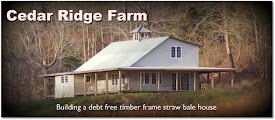Let’s see if I can meet my goal of five posts this week. I let down on the job last week with no good excuse. I just didn’t seem motivated to post. I could’ve found the time, I suppose. Part of the deal may be partially due to a bit of stress. What do I have to stress about? Nothing really, as long as I keep things in perspective: God’s in charge, giving me nothing to worry about.
As I mentioned previously, we live without debt. It’s been a way of life for the last ten years or so. We’ve been without a mortgage for nearly six years now. I’m currently in a situation that is akin to debt in my mind, and I don’t like it.
In August 2004, we bought a 1996 Chevrolet Suburban that had previously belonged to the National Forestry Service.  I purchased it from a dealer off of Ebay who had bought it at an auction. We wanted an all-around vehicle that would serve our family and farm needs. This 3/4-ton Suburban did the job. Until gas prices escalated out of control, the pitiful gas mileage the big block V-8 in it achieved wasn’t a problem. Based upon the amount of miles we annually put on a vehicle, it wouldn’t have saved us anything to have another vehicle on which to pay taxes, registration, and insurance. However, last summer we were offered a good deal on a one-owner car in which all six of us could fit. The extra expenses associated with a second vehicle could be and have been met from what we’ve been able to save in gas.
I purchased it from a dealer off of Ebay who had bought it at an auction. We wanted an all-around vehicle that would serve our family and farm needs. This 3/4-ton Suburban did the job. Until gas prices escalated out of control, the pitiful gas mileage the big block V-8 in it achieved wasn’t a problem. Based upon the amount of miles we annually put on a vehicle, it wouldn’t have saved us anything to have another vehicle on which to pay taxes, registration, and insurance. However, last summer we were offered a good deal on a one-owner car in which all six of us could fit. The extra expenses associated with a second vehicle could be and have been met from what we’ve been able to save in gas.
So, now we don’t need a Suburban for the farm. In fact, a pickup truck would be more convenient. I began contemplating what I really desired and needed from a farm truck, and then I began looking to determine what it might cost. My idea was to sell the Suburban to pay for the truck. But, I didn’t want to be without a farm vehicle in the meantime. It’s convenient to be able to haul firewood and other things when needed or desired.
Then, a truck came up in my Ebay searches that met my criteria: four wheel drive, at least 3/4- ton, dependable, with a flat-bed dump.  This truck was a 1979 F250. My dad offered to buy it for me, and after I sold the Suburban, I would buy it from him. Actually, he originally offered to loan me the money, but I felt better changing the terms, even if it really is only semantically different. So, we brought the truck home on January 1, 2009. Since then, I’ve been trying to sell the Suburban. Guess what? It’s not worth as much as I thought, or, rather, people aren’t willing to pay as much as it’s worth.
This truck was a 1979 F250. My dad offered to buy it for me, and after I sold the Suburban, I would buy it from him. Actually, he originally offered to loan me the money, but I felt better changing the terms, even if it really is only semantically different. So, we brought the truck home on January 1, 2009. Since then, I’ve been trying to sell the Suburban. Guess what? It’s not worth as much as I thought, or, rather, people aren’t willing to pay as much as it’s worth.
My stress has been because of the “debt” I feel I am in to my dad. I have to pay him for the truck. Until I do, it’s hanging over me. It’s been affecting me, kind of hanging there low-key. It’s been a good reminder about being in debt, though. For that I’m actually thankful.
The story continues. I listed the Suburban on Craigslist. One guy was interested. He looked at it, but wanted to get it painted. While he was getting an estimate, I listed it on Ebay. Then, it sold the next day for the Buy-it-Now price. The guy who bought it lives in Michigan. Great guy. I’ve talked to him on the phone several times, and I really like him. So, we made arrangements to meet him part way so that he didn’t have to drive the whole 600 miles to get it. He ended up driving nearly 500 miles. The only problem was that on the way to meet him, the Suburban began having some problems its never had before, something computer-related. I couldn’t meet him, and even if I could, he couldn’t drive it home acting the way it was.
So, I called him on his friend’s cell phone to let him know. They decided to head back to Michigan. He couldn’t take the Suburban. It was no longer sold. After it sat at a truck stop for a while, we drove it home with no more problems. I guess I wasn’t supposed to sell it that day. I’m having it checked out in the morning, though, because if it’s fixed and working properly, he’ll still buy it. In the meantime, I still have a truck to buy from my dad.

P.S. I took this photo the evening of January 9, 2008.






























